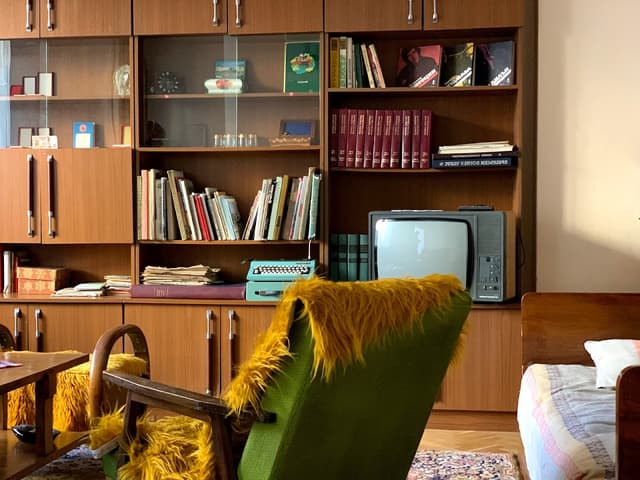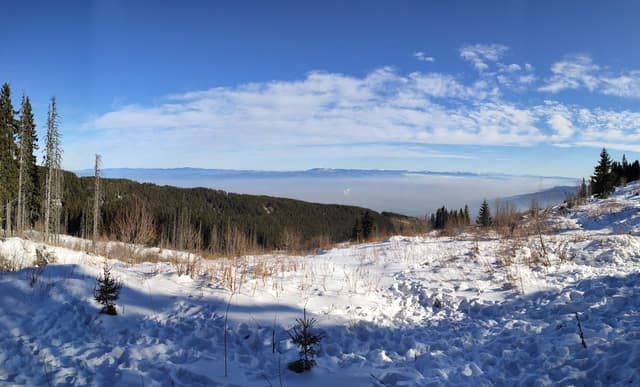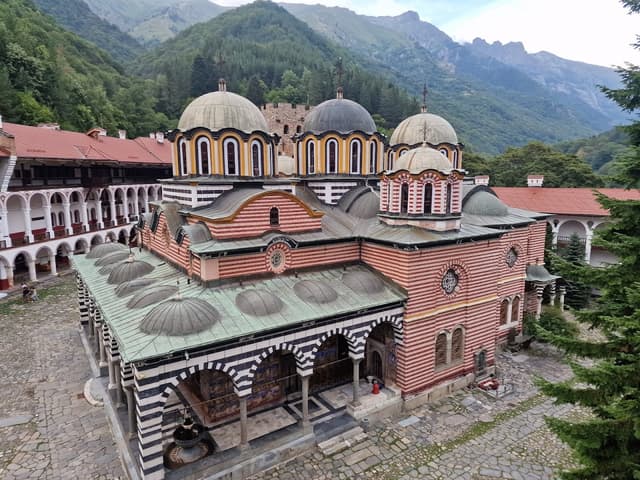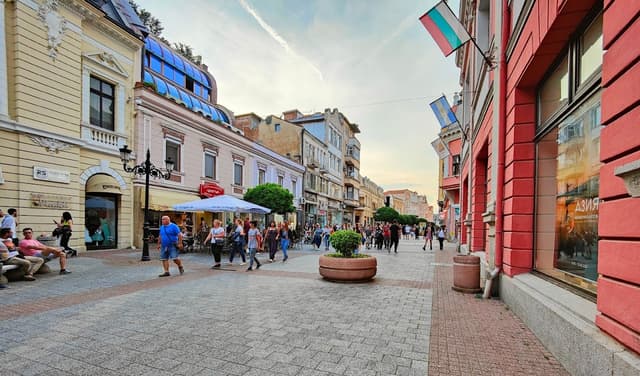Exploring the Surprising Capital of Bulgaria: Sofia

Today, we are going to delve into the capital of Bulgaria, Sofia, where I lived for a month. I must say that I discovered much more than I expected. Perhaps the Bulgarian language and their local currency, the leva, which is worth less than the euro, make it one of the cheapest countries to travel to in Europe. They also use the Cyrillic alphabet, so make sure to have your cell phone translator ready.
A Pleasant Surprise
Sofia: A City Steeped in History
Let's start with Sofia, one of the oldest capitals in Europe, with over 6,000 years of history. Just take a look at these ruins here. These are remnants of the Roman Empire and are now part of the Sofia Metro Station. It's quite remarkable to see these ruins amidst the bustling city. In fact, if you walk past these ruins, you'll find the metro station, which is conveniently located just outside the Sofia Parliament. Although it may seem like an ordinary station, it's actually filled with ruins. The Romans were particularly drawn to this area because of its thermal waters. In fact, near where I'm staying, there are mineral water fountains that locals often visit. Bulgaria briefly became the capital of the Roman Empire due to the popularity of these thermal waters.
Now, let's talk about one of my favorite areas. It's called Boulevard Vitosha, the main street in the center of Sofia. This bustling boulevard is lined with elegant shops, restaurants, and cafes. It gets its name from Mount Vitosha, which can be seen at the end of the street. Speaking of restaurants, one of my favorites is a Bulgarian one, The Hadjidragana Tavern. I highly recommend it. It's located near Vitosha and offers delicious traditional Bulgarian cuisine. The ambiance is reminiscent of a bygone era, and they even have live music. If you visit, don't forget to try the worm wine. It's a must-try, and surprisingly affordable!

A Gastronomic Adventure
If you're like me and believe that a country is best explored through its cuisine, then I recommend taking the Sofia food tour called "Balcan Bites." You can book this free tour online.
It includes visits to several local restaurants where you can sample different typical snacks from the city. In the end, you simply give a tip to the guide. I loved this tour because it takes you to truly local restaurants. For example, we tried Mekitsa, a popular Bulgarian breakfast item. We visited a local place called Mekitsa & Coffee, and trust me, it tastes like a donut. We also tried Tarator, a famous cold yogurt and cucumber soup that locals enjoy during the summer to cool off. And one of my favorites was Banitsa, a dish made with layers of filo pastry, egg, and cheese. It's absolutely delicious! You must also try Lutenitza, a slightly sweet tomato sauce that Bulgarians enjoy with bread. Each household has its own recipe, but you can find it in any supermarket. And of course, we can't end the tour without sampling the local beverage, rakia. It's a strong drink available in various flavors, including peach, other fruits, and even habanero. When you try it, don't forget to say "Nazdrave," which means cheers in Bulgarian.
A City of Diversity and Tolerance
One of the things that struck me about Sofia is that it's a relatively small city, making it easy to explore on foot. I also appreciate its unique cultural blend. As Bulgaria is predominantly an Orthodox country, you can find many Orthodox churches throughout the city. The symbol of Sofia is the St. Alexander Nevsky Cathedral, one of the largest cathedrals in the world. If you search for Sofia on the internet, you'll likely come across a picture of this magnificent cathedral.

Additionally, Bulgaria was a communist country until the early 1990s, which is evident in the architecture of the city. There are tours available that showcase this part of history, and I highly recommend them. Museums are also worth visiting. One museum that I particularly enjoyed was the Red Flat Museum. It's an ordinary apartment where people still live, but this specific apartment was donated by a family to provide visitors with an insight into life during the communist era. When you enter the apartment, you are given an audio guide that takes you through every detail, allowing you to explore freely. You can touch everything, look at photographs, browse the bookshelves, and immerse yourself in the atmosphere. It was truly fascinating.

Natural Beauty Beyond the City
If you've had your fill of the city, don't worry because Bulgaria is known for its stunning natural landscapes. One of the most popular destinations is Vitosha Mountain, which I mentioned earlier. There are many tours that can take you there, allowing you to explore or even hike the mountain. The views from the top are breathtaking. During my visit, I also had the opportunity to see some beautiful waterfalls.

However, if you're looking for a unique experience, I highly recommend visiting the Rila Monastery, a monastery nestled in the mountains. It's a bit of a drive from the city, but it is absolutely worth it. This Orthodox church is located in the middle of a forest, and the tour I took allowed us to enter the chapel. I visited during winter, so I'm not sure how it would be in summer, but personally, I loved it.

Finally, a couple of hours from the city lies the picturesque village of Plovdiv. You might have heard about it since it's often mentioned. Although I visited during winter when most

Where to stay in Sofia?
I will give you 2 options to fine a plane to stay.
But if you prefer your own space I give you this options which are also cheap and you can have a confortable stay.
Where to eat in Sofia?
As I told you I live here for a month so a got to visit really nice cafeterias and restaurants that I hope you will like as well.




I hope you find this usefull for you trip, Sofia could be a simple city but if you get the chance to know more about it and conect with the cultura I'm sure you will like it more than you spect.
The home for unique & authentic travel

